Art & Exhibitions
At the Athens Biennale, Artists Fight Against Social Media and Fake News With an Unlikely Weapon: Nuance
Plus, four artists in the show to watch.
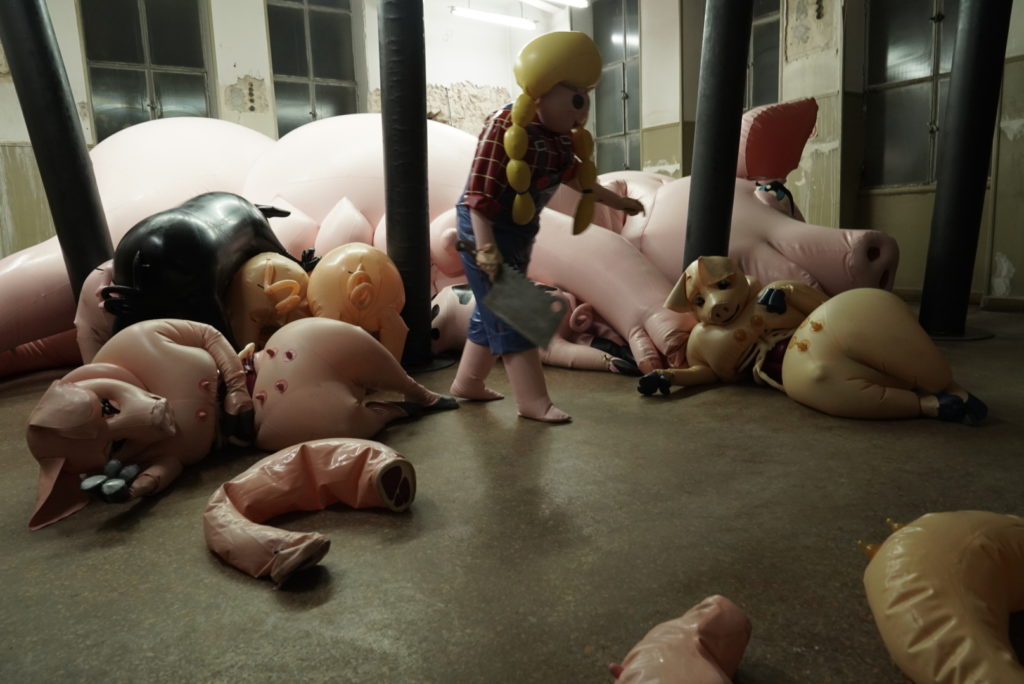
Plus, four artists in the show to watch.

Hili Perlson

The curators of the 6th Athens Biennale did not take the easy route, opting to build a show around Instagrammable installations or semi-overlooked Modernist treasures. Instead, they chose to respond in what feels like real time to the herd behavior and binary thinking that is fostered by the Internet. Their sprawling exhibition, “ANTI,” which opened on October 26, attempts to pinpoint what curators Stefanie Hessler, Kostis Stafylakis, and Poka-Yio describe as a crisis in the world today.
During a panel discussion on the biennial’s opening day, the curators argued that without an adequate way to express life’s complexities and nuance in social media posts, we have opened the door to fast-spreading and polarizing non- and half-truths.
Binary ways of thinking and fundamentalist identity politics have proven to be divisive and often counter-productive in the cultural realm especially, they said. With this biennial, the curators make the case for carving out a space for complexity in cultural discourse; for the license to stand for something as well as its opposite; for slight nuances that depend on context and malleable self-definitions that accept differences of experience.
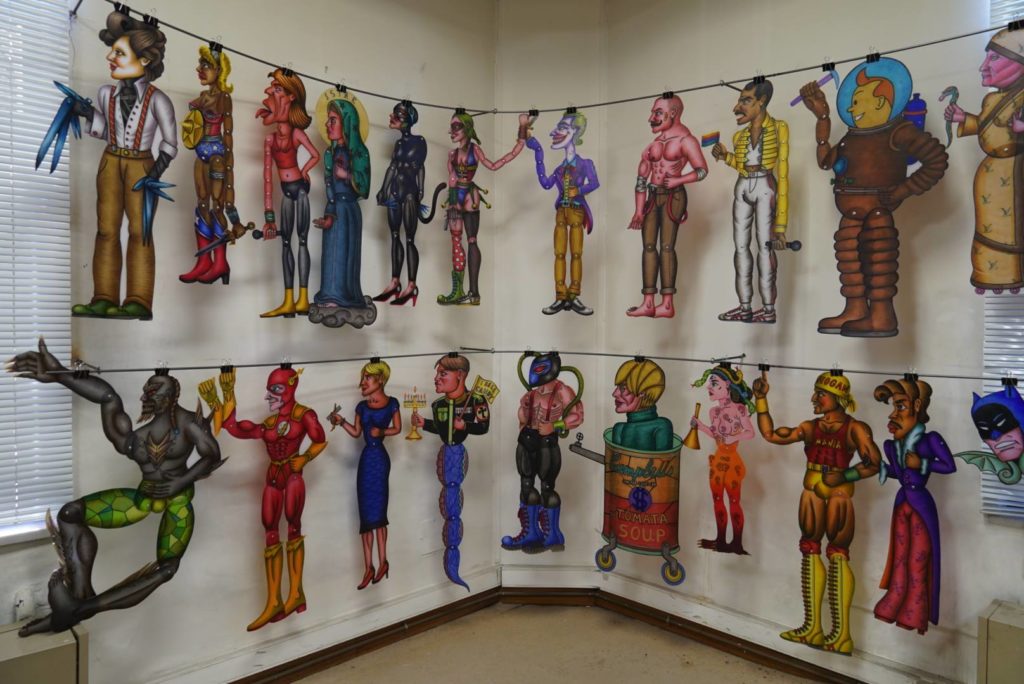
Installation view, Spyros Aggelopoulos’s Amusementorium (2018). Courtesy of Athens Biennale.
How do they attempt to achieve that goal? Let’s call it complexity with a vengeance. For one, the list of participating artists includes a host of practitioners working as collectives, under ever-changing monikers, or in temporary formations, including The Agency, OMSK Social Club, The Peng! Collective, Front Deutscher Äpfel, or The Bound Collective, to name a few.
There are also participants whose practices elude strict definitions, like the musician, performer, and filmmaker Actually Huizenga. The biennale also includes the fashion designer Angelos Frentzos, who tests the boundaries between his main occupation and art-making. Frentzos presents his latest collection, which is entirely based on bathroom interiors, at the biennial’s main venue, the 1930s Telecommunications, Telegrams, and Post (TTT) building in central Athens.
Spread across four adjacent venues, this low-budget biennial shares aesthetic and thematic concerns (as well as some artists) with the 9th Berlin Biennale in 2016. But the Berlin show curated by the New York-based collective DIS now feels quaint in comparison—optimistic, even. Pre-Trump and Bolsonaro’s election victories in the US and Brazil, the world was very different two summers ago.
That is not to say that the Athens Biennale is bleak or dispiriting—particularly when compared to documenta 14, which closed its Athens leg just over a year ago. “ANTI” is a young, vibrant, and sometimes messy show. Many of the works are time-based video installations or performances taking place in public spaces throughout the show’s run, rendering it impossible to view the exhibition in its entirety.
The curators of the biennale shift our gaze to ever-morphing counter- and sub-cultures, to voices that look for ways to subvert the market’s ability to absorb and repackage pretty much anything. Your latex fetish was commodified to sell magazines? Make it weirder. Your burnout is mined for value in the self-care industry? Pervert it. Your progressive views are abused as fodder for reactionary politics? Complicate your rhetoric.
Below, we spotlight four of the artists who tackled these issues head-on.
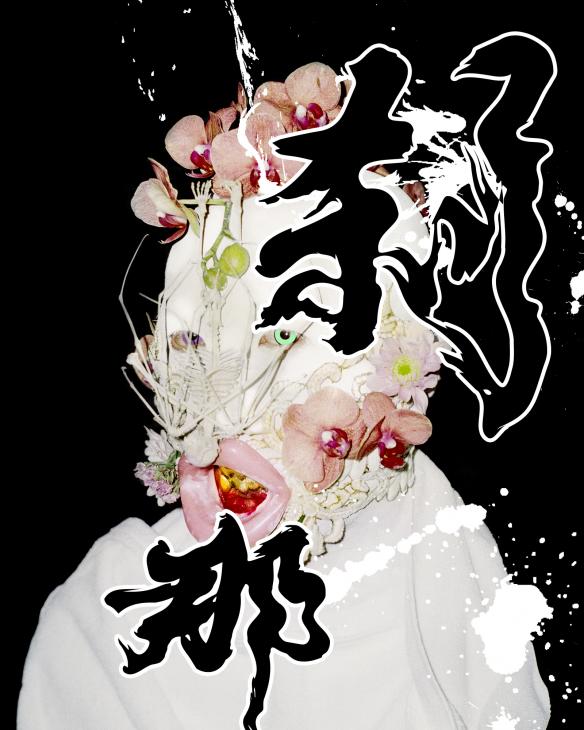
Tianzhuo Chen, An Atypical Brain Damage (2018). Photo: Shen Peiyu
The Beijing- and Shanghai-based artist is best known in the electronic music world for his visually intense, techno-heavy performances as a co-founder of Asian Dope Boys, together with Yu Han. In the biennial’s main venue, the TTT Building, he shows four videos from 2014 to 2017. Shot on the banks of the Ganges River in the holy city of Varanasi, India, the piece G.H.O.S.T. (2017) features two demon-like performers engaging in what could be a ritualistic dance, a fight straight out of a spiritually-tinged manga, or a sensual mating ritual. The young artist creates powerful, alluring images that blend Buddhist and Hindu religious symbolism with clubbing, rearranging their manifestation in pop culture.
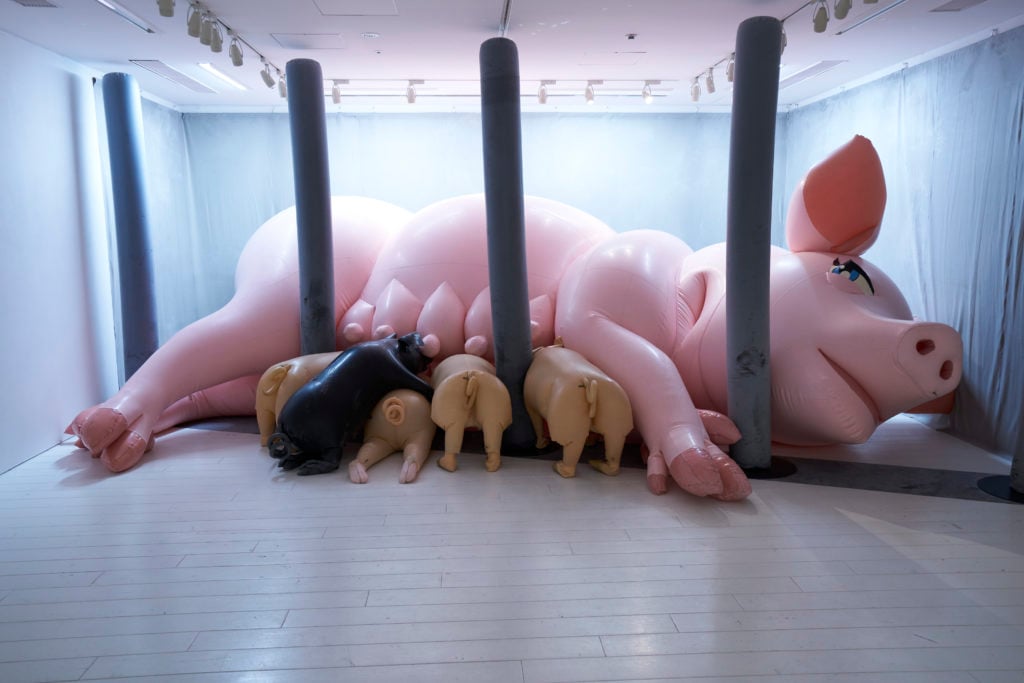
Saeborg, Pigpen (2016). Photo: Takeo Hibino.
The Japanese artist is also active in Department H, the Japanese event for latex-fetish cosplay, which she describes on her website as a “sexual minority club party.” Under the pseudonym Saeborg, she designs inflatable rubber suits and creates performative plays around them. Inside the disused Benakeios Library, a huge inflatable rubber pig lies on its side, with human-sized rubber piglets sucking on her utters. The installation Pigpen (2016) comes to life in a performance where a Playmobil-like latex farm girl chops up the piglets and pulls out their intestines. Are they playing out a strange sexual fantasy or staging a PETA protest? Whatever it is, with its sanitized and cute-ified gore, it is nowhere near as disturbing as footage from factory farms.
Theo Triantafyllidis, Nike (2018). Courtesy of the artist.
The Greek, LA-based artist Theo Triantafyllidis creates sculptures that are enhanced in the exhibition space with an augmented reality video simulation showing his blue-haired, body-building superhero avatar at work in the studio. The piece on view in the TTT Building, titled Nike (2018), allows the viewer to move a monitor on wheels around the room in order to watch different angles of the studio and drop in on the avatar during the creation of the mixed-media sculptural work. The avatar hauls heavy boulders around, lifts cast-iron ready-mades, and growls short sentences as it talks itself through the creation of the sculpture of the mythological Greek goddess of victory.
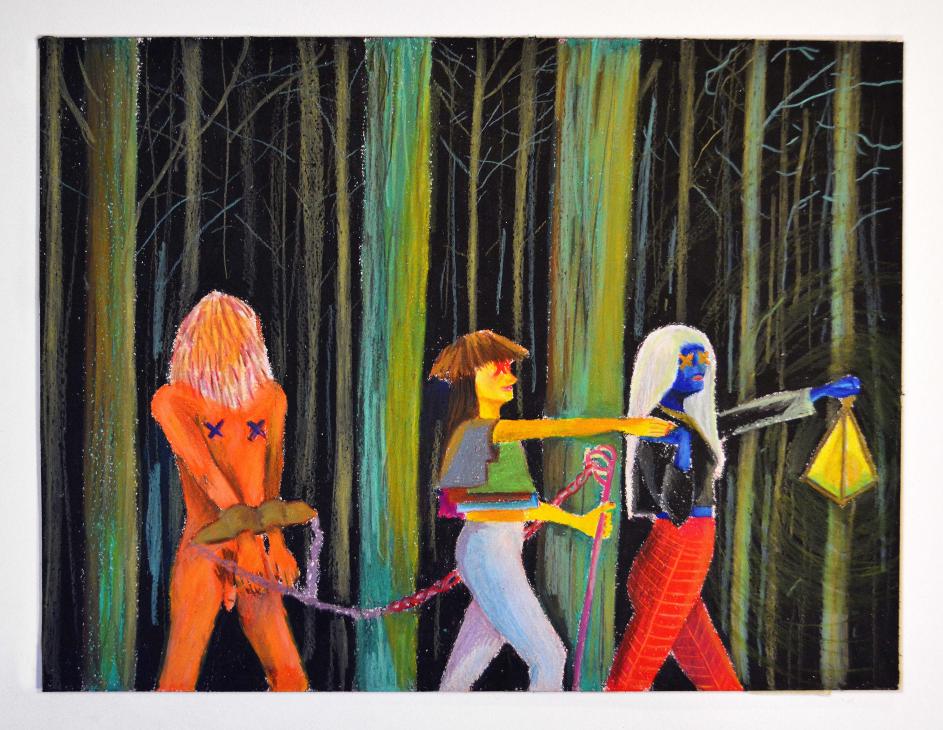
Wy Lauren, The Gift (2016). Courtesy of the artist.
Not all of the works that stand out in the Athens Biennale are in new or nontraditional media. The Chicago-based artist Lauren Wy, who is an MFA student at Northwestern, fills a small room in the TTT Building with luscious crayon drawings on paper. The magnificent appeal of the figurative drawings contrasts their modest scale: they depict intimate snapshots of much larger stories that evoke dangerous fantasies. There are scenes of baroque plays of submission and dominance, games, orgies, and tenderness. Yet there is a certain naiveté to the activities of this strange hedonistic cult. It is as if its members have figured out a way to eliminate sin, guilt, jealousy, and corruption, or are completely oblivious to their existence. Glimpse into their universe once, and you might be changed.
“ANTI,” the 6th Athens Biennale, October 26 through December 9, various venues, Athens.